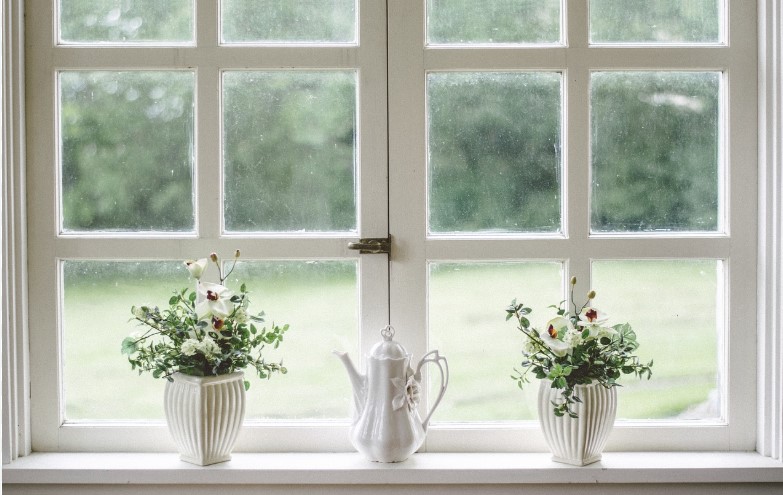Windows play a crucial role in a home’s energy efficiency, comfort, and aesthetic appeal. Choosing between energy-efficient windows and regular windows is a significant decision that can impact your energy bills, indoor climate, and overall home value. In this in-depth comparison, we will explore the differences, benefits, costs, and long-term value of energy-efficient windows versus regular windows.
What Are Energy-Efficient Windows?
Energy-efficient windows are designed to minimize heat transfer, keeping indoor spaces warm in winter and cool in summer. These windows typically feature multiple layers of glazing, special coatings, and insulated frames to reduce energy loss.
Key Features of Energy-Efficient Windows
- Low-E (Low Emissivity) Coatings: Reflect infrared and ultraviolet rays, preventing heat loss and interior fading.
- Multiple Panes: Double or triple-pane glass filled with inert gases like argon or krypton improves insulation.
- Insulated Frames: Materials such as vinyl, fiberglass, or composite help minimize thermal transfer.
- Weather Stripping and Seals: Reduce air leaks and drafts.
- Solar Heat Gain Coefficient (SHGC): Measures how much solar radiation enters a home; lower SHGC means better heat resistance.
- U-Factor: Measures thermal efficiency; lower U-factor means better insulation.
What Are Regular Windows?
Regular windows, also known as single-pane or standard windows, are the traditional choice in older homes. They lack advanced insulation and coatings, making them less efficient at controlling indoor temperatures.
Key Features of Regular Windows
- Single-Pane Glass: Offers minimal insulation.
- Basic Frames: Often made of aluminum, wood, or basic vinyl.
- Higher U-Factor: Allows more heat transfer, leading to higher energy consumption.
- Lack of Coatings: No Low-E coating to prevent UV radiation or heat gain.
- Limited Noise Reduction: Provides less soundproofing compared to energy-efficient models.
Energy-Efficient Windows vs. Regular Windows: A Detailed Comparison
1. Energy Efficiency
- Energy-Efficient Windows: Reduce energy loss by up to 30%, lowering heating and cooling costs.
- Regular Windows: Allow heat to escape in winter and enter in summer, leading to higher energy consumption.
2. Cost Considerations
- Energy-Efficient Windows: Higher upfront cost but significant long-term savings on energy bills.
- Regular Windows: Lower initial cost but can result in higher heating and cooling expenses.
3. Comfort Levels
- Energy-Efficient Windows: Maintain consistent indoor temperatures and reduce drafts.
- Regular Windows: Can cause cold spots in winter and excessive heat in summer.
4. Durability and Maintenance
- Energy-Efficient Windows: Long-lasting materials require minimal maintenance.
- Regular Windows: May need frequent repairs due to wear and tear.
5. Environmental Impact
- Energy-Efficient Windows: Reduce carbon footprint by minimizing energy waste.
- Regular Windows: Contribute to higher energy consumption and emissions.
Pros and Cons of Energy-Efficient Windows
Pros:
✔ Lower energy bills ✔ Increased indoor comfort ✔ UV protection reduces furniture fading ✔ Noise reduction ✔ Eco-friendly choice ✔ Higher home resale value
Cons:
✘ Higher initial cost ✘ Installation may require professional services ✘ Limited design options compared to regular windows
Pros and Cons of Regular Windows
Pros:
✔ Lower upfront cost ✔ More style variety available ✔ Easy installation
Cons:
✘ High energy bills ✘ Poor insulation and temperature control ✘ Increased noise pollution ✘ Requires more maintenance and repairs
When Should You Choose Energy-Efficient Windows?
Energy-efficient windows are a smart choice if you:
- Live in areas with extreme temperatures
- Want to lower your heating and cooling costs
- Are looking for long-term investment benefits
- Plan to reduce your environmental footprint
- Need better soundproofing for a quieter home
When Are Regular Windows a Better Option?
Regular windows might be suitable if you:
- Have a tight budget and need a quick replacement
- Live in a mild climate with minimal heating or cooling needs
- Prefer a classic window style over efficiency features
FAQs
1. How much can I save with energy-efficient windows?
Depending on your location and energy rates, energy-efficient windows can save homeowners between 10-30% on energy bills annually.
2. Do energy-efficient windows qualify for tax credits?
Yes, in many regions, homeowners can receive tax credits or rebates for installing energy-efficient windows. Check with local government programs for details.
3. Are energy-efficient windows worth the cost?
Yes, despite the higher initial investment, they provide long-term savings, enhanced comfort, and increased property value.
4. Can I install energy-efficient windows myself?
While DIY installation is possible, professional installation is recommended to ensure a proper fit and maximum efficiency.
5. How long do energy-efficient windows last?
With proper maintenance, energy-efficient windows can last 20-30 years or more, making them a durable investment for homeowners.
Conclusion: Which One Should You Choose?
While regular windows may seem like a cost-effective option initially, energy-efficient windows provide substantial benefits in the long run. They offer better insulation, reduced energy costs, and improved indoor comfort. If budget permits, upgrading to energy-efficient windows is a wise investment for a sustainable and comfortable home.

